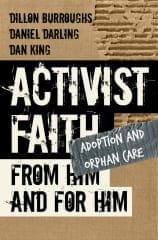[serialposts]In my last two columns we discussed misunderstandings of Bible interpretation and the foundation for interpreting the Bible in community. So in this final installment of the three part series on Bible interpretation we will explore what interpreting the Bible as a community might look like.
Interpreting the Bible in community means that we interpret the Bible beyond our individual self. We recognize that the body of Christ is a lot bigger then we are and not every person agrees on every detail of interpretation.
Therefore, interpreting the Bible in community engages the whole body of Christ in as much as is possible.
So what kinds of people are in our community? I suggest that our community consists of a known and an unknown element.
The Known Community
Perhaps most important is our known community, which is our local assembly. The people that we rub shoulders with that know our weaknesses that encourage us and warn us – these are the people of our known community.
Our pastors and teachers are part of our known community as well as friends, co-workers, and family members.
This known community helps to bring accountability to our interpretation as well as accountability to our actions which should reflect our interpretation.
We should talk with people in our known community about our interpretations. Dietrich Bonhoeffer suggests that a community should not only encourage private reading, but (more importantly) reading scripture out loud together (Life Together, 50-57).
The Unknown Community
Our unknown community is the historical and contemporary church that we do not know personally.
Scholars and Christian thinkers in the past (i.e. Augustine, Luther, Irenaeus) and present (i.e. Gordon Fee, J. I. Packer, N. T. Wright) should be part of our unknown community. We might not know them personally, but we can read their interpretations in books.
Christians from cultures different then our own are part of our unknown community. Perhaps these different cultures are pastors from a third-world country or scholars from Asian or Latin American backgrounds.
We should look at Christians from differing theological bias such as feminist theologians, Anabaptist theologians, or adherents to a form of libertation theology.
This unknown community helps us see from a different perspective and brings a level of balance to our interpretation that we cannot acheive on our own.
Not that we will or should agree with everyone, but engagement with the unknown community helps us better understand and respect the whole body of Christ.
Community of the Book
We should develop our interpretations within our known and unknown communities.
S. Grenz and J. Franke explain:
…sensitivity to reading within community extends to our individual interpretive efforts as well, as our private readings of the text are seasoned with the awareness that, even as the church scattered, each of us remains a participant in a particular gathered community (Beyond Foundationlism, 92).
Interpreting scripture within community brings accountability, balance, and a greater awareness of the Holy Spirit’s ministry in the community.
The Bible is a church (or community) document and we should interpret it within the context of community.
We are not individuals of the Book, but a community of the Book.






Right on…..lets spend more time with the unknown community…..
I think this is the best way I’ve yet seen of reasoning why seeking outside, or extra-Biblical reading for help with interpretation is anything but heretical.